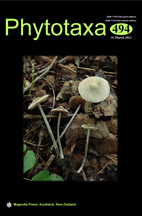Abstract
The genus, Duthiea Hackel (1895: 200) consists of three species, viz. D. brachypodium (P.Candargy 1901: 65) Keng & Keng (1965: 182), D. bromoides Hackel (1895: 200) and D. oligostachya (Munro ex Aitchison 1880: 108) Stapf (1896: sub Pl. 2474), distributed mainly in mountainous zones of Afghanistan to western China (Kellogg 2015). Duthiea is characterized by having pedicelled spikelets arranged to congested one-sided racemes; rachilla disarticulating above the glumes and between the florets; glumes equal to sub-equal, elliptic or lanceolate, with 5–7 nerves, persistent; lemma hirsute or villous with bifid apex and geniculate single awn with twisted column arising from the sinus of lemma; lodicules absent; ovary obovoid; style single, tomentose, longer or shorter than the stigmas; stigmas 2, terminally exerted from the floret; caryopsis cylindrical, covered with forwardly directed bristles (Bor 1953, 1960).

